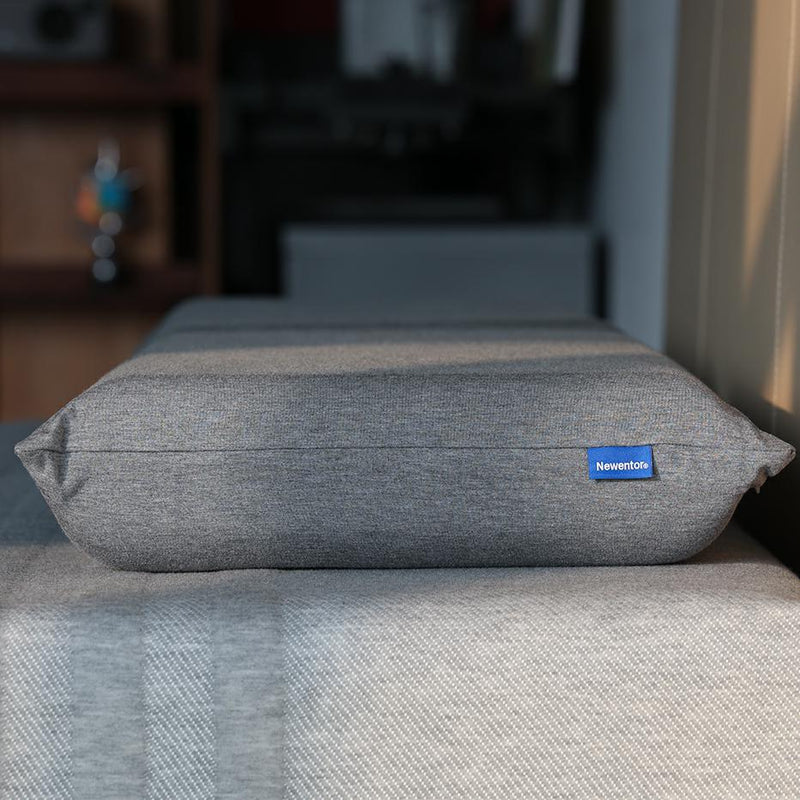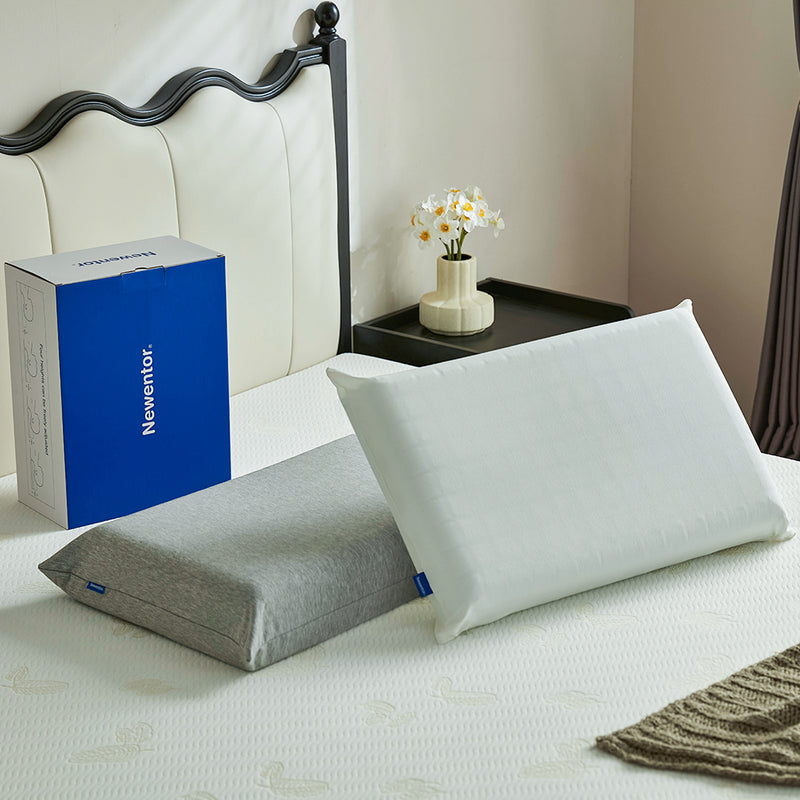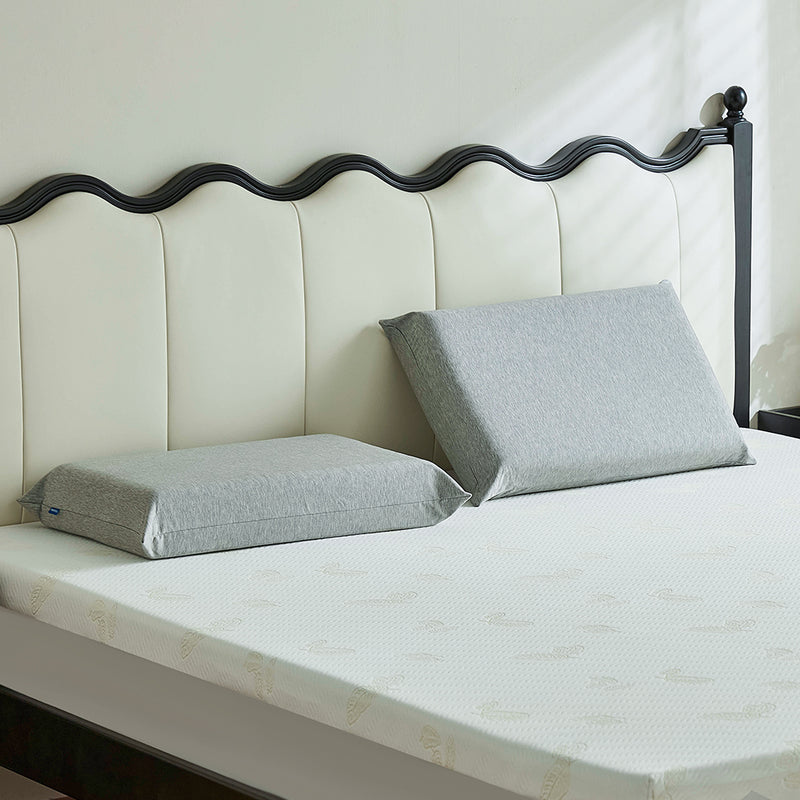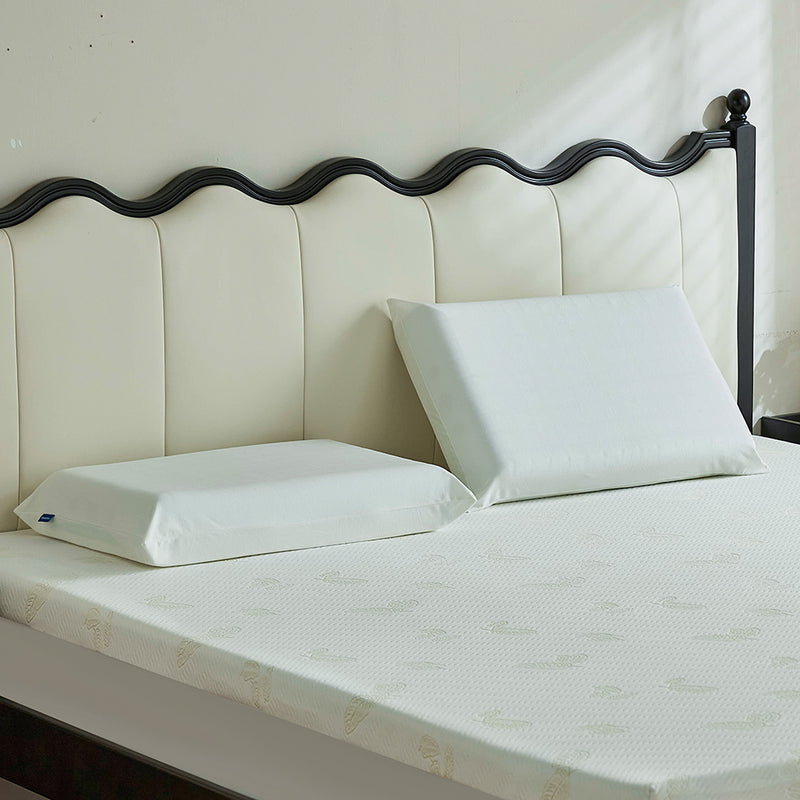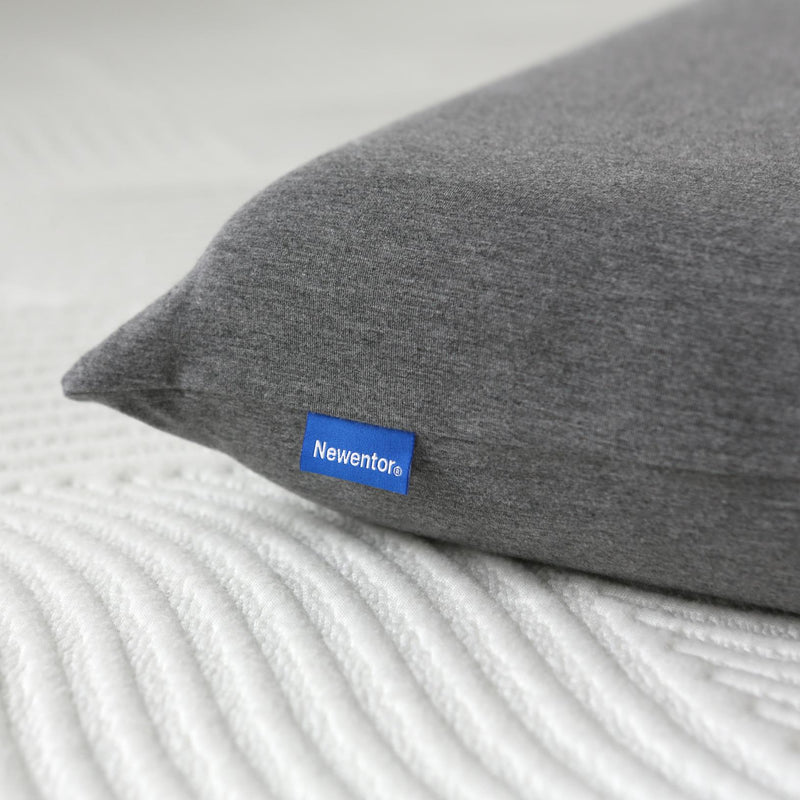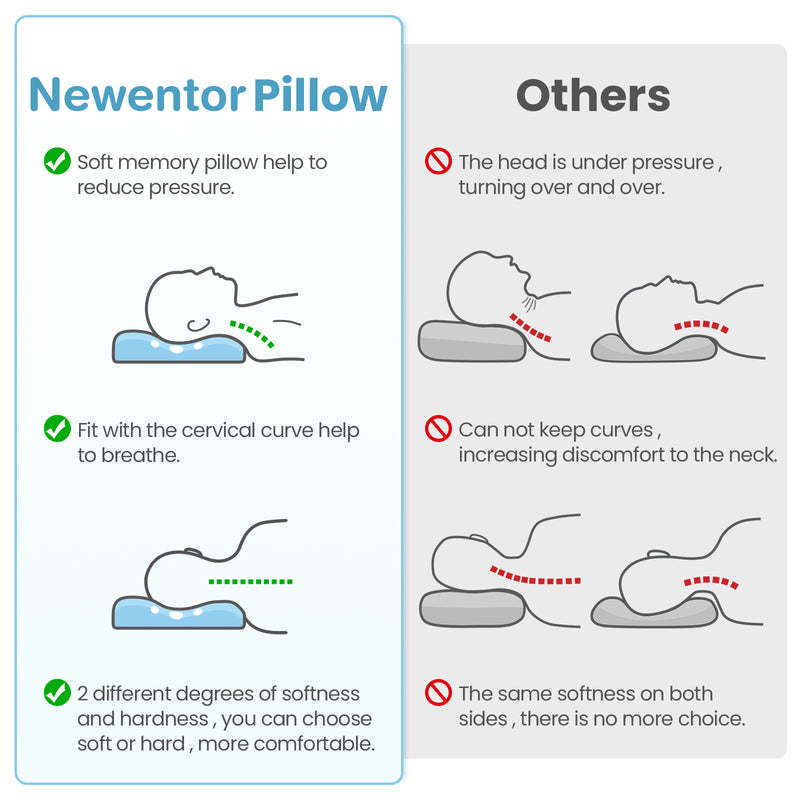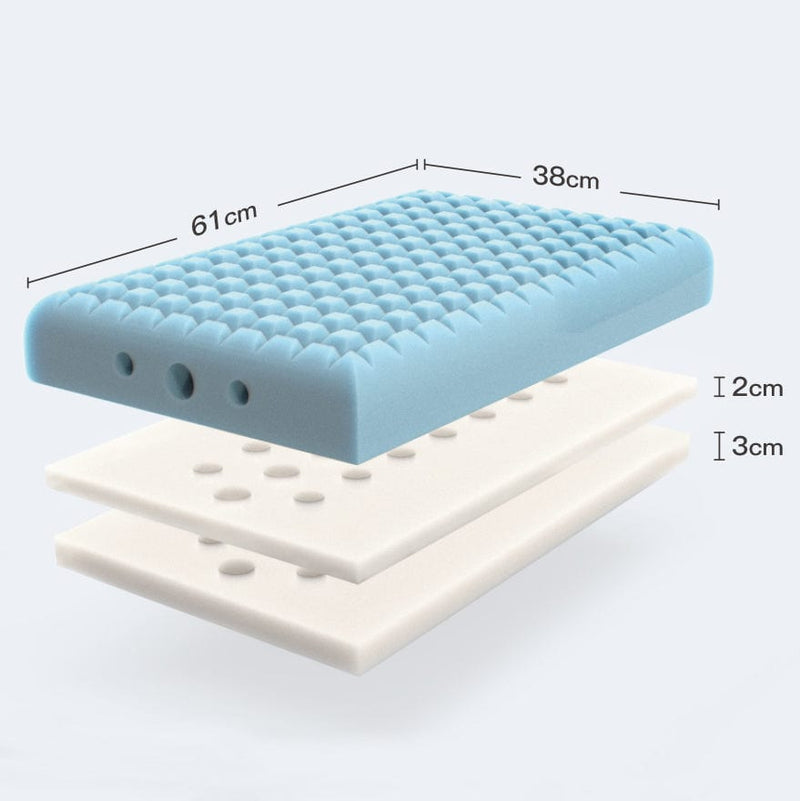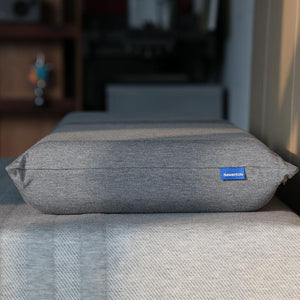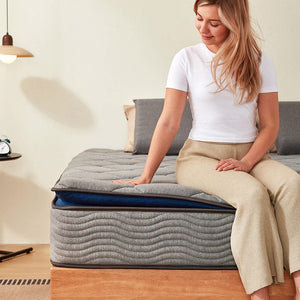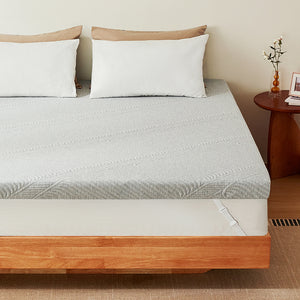A latex pillow is often seen as the all-natural and buoyant alternative in the world of bedding. But what exactly is it? Natural latex is derived from the sap of the rubber tree, making it a sustainable and eco-friendly choice. It is processed in two primary ways: the Talalay method, which produces a softer, airier foam, and the Dunlop method, which results in a denser, firmer core.
Pillow Comparsion 2025: Latex Pillow vs Memory Foam Pillow
The debate of latex vs memory foam pillow has long been a hot topic in the pillow market. On one hand, latex pillows are eco-friendly, elastic, and provide strong support. On the other hand, memory foam pillows offer softness and contouring, providing a "hugging" comfort. So, which should you choose? This question has puzzled many, but today, we are here to provide an answer!
This article will dive into all the essential information about latex and memory foam pillows, covering their material composition, key features, pros, and cons. Uncover the truth behind these two premium pillow options and choose the one that will offer you lasting comfort for years to come!
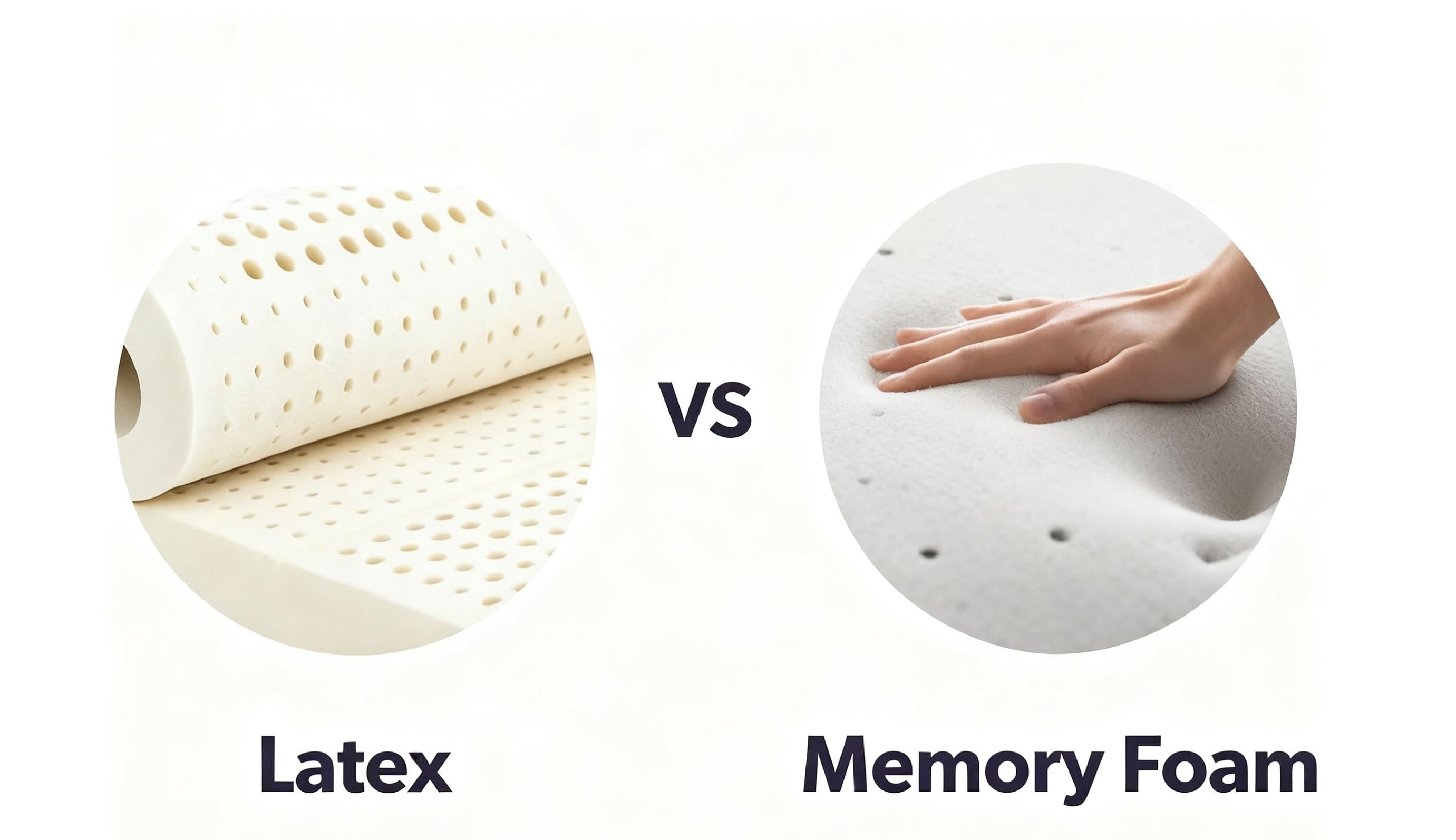
In this article
What is Latex Pillow? Pros and Cons?
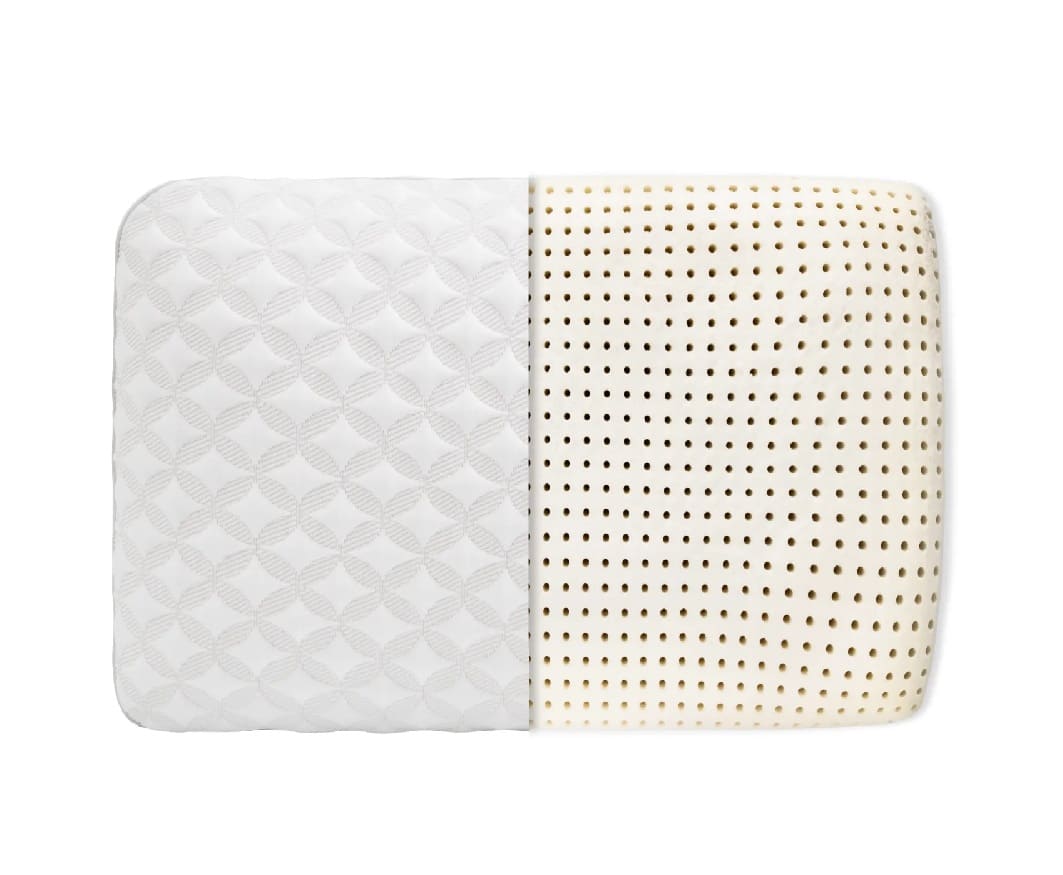
The Pros and Cons of Latex Pillow
Pros
- Exceptional Durability: This is where latex truly shines. High-quality latex pillows can last anywhere from 5 to 8 years, far outlasting their synthetic counterparts.
- Latex has an open-cell structure with natural pinholes that promote fantastic airflow. This keeps the pillow naturally cooler than most foams, making it ideal if you frequently overheat.
- Instant Responsiveness (Bounce): Unlike memory foam, latex offers a buoyant, responsive feel. When you move, the pillow instantly snaps back to its original shape, providing continuous support without that "sinking" feeling.
- Eco-Friendly: Natural latex is biodegradable and free from many of the harsh chemicals found in synthetic foams, appealing to the environmentally conscious consumer.
- Hypoallergenic: Latex is naturally resistant to mold, mildew, and dust mites, a huge benefit for allergy sufferers.
Cons
- Higher Cost: Due to the material sourcing and specialized processing (especially Talalay), latex pillows are typically more expensive upfront.
- Unique Smell: While often mild, natural latex can have a subtle, sweet, rubbery smell, which usually dissipates quickly.
- The ergonomic design of latex pillows is not as suitable as memory foam pillows for people with joint pain.
What is Memory Foam Pillow? Pros and Cons?
Memory foam, also known as viscoelastic polyurethane foam, was first developed by NASA in the 1970s. It is famous for its unique ability to soften and contour precisely to the shape of your head and neck in response to heat and pressure. When comparing memory foam vs latex pillow, memory foam offers that classic, slow-response hug.

The Pros and Cons of Memory Foam Pillow
Pros
- Pressure Relief: Memory foam is excellent at relieving pressure on sensitive areas, such as the neck and shoulders. If you suffer from neck or back pain, a memory foam pillow may be a good option.
- Contouring: The pillow adjusts to the shape of your head and neck, providing personalized support. It can be particularly beneficial for side sleepers.
- Allergy-Friendly: Like latex, memory foam pillows are resistant to dust mites, mold, and bacteria.
- Affordability: Synthetic, traditional, or even gel-infused memory foam is generally more cost-effective than natural latex, making it an accessible option for many budgets.
Cons
- Not suitable for hot sleepers.
- New memory foam often emits a chemical odor, known as off-gassing, which can take several days to dissipate.
- The slow-sinking feeling can be a disadvantage if you frequently change sleeping positions, as the pillow takes time to remold and catch up.
Latex vs Memory Foam Pillow, Which One is Best for You?
The best choice between a latex vs memory foam pillow comes down to three key factors: your sleeping position, your temperature preference, and your budget.
| Feature | Latex Pillow | Memory Foam Pillow |
|---|---|---|
| Feel & Responsiveness | Buoyant, springy, and responsive (instantaneous snap-back) | Contouring, slow-sinking, and cradling (slow response) |
| Temperature | Excellent breathability; sleeps cool naturally | Tends to retain heat; requires cooling technologies |
| Durability & Longevity | Very durable; lasts 5–8 years | Less durable; lasts 3–5 years |
| Best for | Hot sleepers, restless sleepers, and allergy sufferers | Side sleepers, those needing specific pressure relief |
| Upfront Cost | Higher | Lower |
If your priority is eliminating neck or shoulder pain, memory foam offers targeted benefits that are often unmatched:
Consider Memory Foam if...
- You Need Deep Contouring: The unique slow-sinking effect provides exceptional, personalized cradle for relieving pain points. It molds precisely to the curves of your head and neck, offering support where you need it most.
- You Sleep on Your Side: The dense contouring fills the gap between your head and shoulder perfectly, ensuring your spine remains straight and properly aligned all night.
- You're on a Budget: It provides great support at a more accessible price point, allowing you to prioritize targeted pain relief without a high upfront investment.
Consider Latex if...
- You're a Hot Sleeper: The superior airflow and natural cooling properties are unmatched.
- You Value Longevity: The long lifespan justifies the higher upfront cost.
- You’re a Combination Sleeper: The instant responsiveness helps your pillow maintain shape and support regardless of how many times you turn.
Ultimately, the best choice ensures your head and neck are perfectly aligned. If you find yourself needing the precise, customized support and height essential for neck pain relief, look for memory foam pillows with adjustable features.
For example, the Newentor adjustable memory foam pillow addresses the primary drawback of solid memory foam (lack of custom height) by allowing you to add or remove the shredded foam filling. This feature means you can fine-tune the loft (height) and firmness to perfectly match your body shape and preferred sleeping position, ensuring that targeted contouring support is always at the optimal level for spinal alignment.

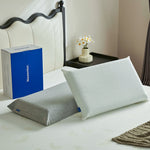


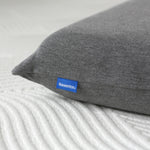

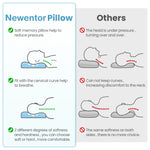
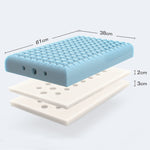
- Sponsored Pillow for Five-Star Hotels.
- Pillows Recommended by Australian Orthopaedic Surgeons.
- Four Adjustable Heights.
- Machine Cutting Pieces to Sleep Dry and Cool.
- 120 Night Free Trial & 10 Years Warranty.
FAQs
Which is better for neck pain, latex or memory foam?
Both are good, but memory foam often gets the edge because its dense, customized contouring can relieve specific, intense pressure points. Latex is excellent for firm, consistent alignment, which helps many people with mild to moderate neck pain.
Are Latex pillows better for hot sleepers?
If you're a hot sleeper, latex pillows are the better choice. They have natural cooling properties due to their open-cell structure and superior airflow, helping to keep you cooler at night. Memory foam can trap heat, but modern cooling gels and ventilated designs are available to address this issue.
Is a latex pillow hypoallergenic?
Yes, natural latex is inherently resistant to dust mites, mold, and mildew, making it a naturally hypoallergenic choice for your bedroom.
Bottom Lines
Choosing between a latex vs memory foam pillow ultimately comes down to your unique needs and preferences. Latex pillows provide durability, excellent breathability, and firm support, while memory foam pillows are known for their ability to contour, relieve pressure, and reduce motion transfer.
For those seeking the perfect balance of support and comfort, the Newentor Memory Foam Pillow could be an ideal choice. Its adjustable features ensure personalized support, making it a great option for improving sleep quality and ensuring you wake up refreshed and pain-free.





















